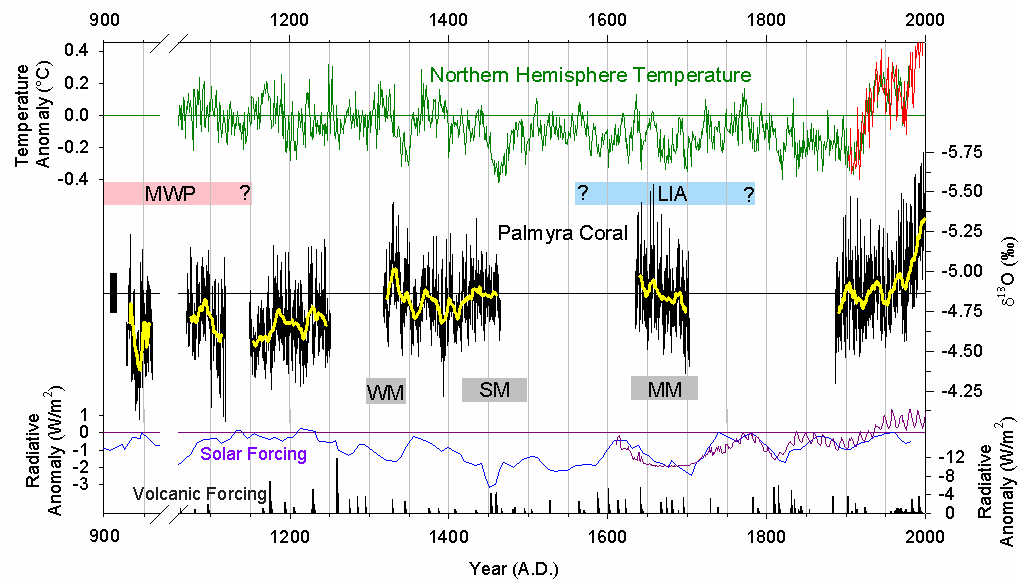ENSO and Tropical Pacific Climate over the Last Millennium
Sea-surface temperature fluctuations in the tropical Pacific affect climate patterns around the globe, as evidenced by the far reach of the El Niņo-Southern Oscillation (ENSO) phenomenon. However, sparse temperature measurements throughout the tropics limit our understanding of the history and behavior of this potent climate system. My research has focused on a collection of fossil corals from Palmyra Island (6°N, 162°W) to extract tropical Pacific temperatures of the last millennium.
This research proceeded through three steps:
1. Characterization of the climate signal recorded in a modern coral oxygen isotopic record that overlaps the instrumental record of climate. (Cobb et al., 2001)
2. Assessing and improving the accuracy of high-precision U/Th dates that we use to date the fossil corals. (Cobb et al., 2003a)
3. Construction and analysis of overlapping fossil coral d18O records. (Cobb et al., 2003b)

Plot of Palmyra coral d18O records, shown with the Mann et al., 1999 Northern Hemisphere temperature reconstruction (green), Jones et al. Northern Hemisphere instrumental temperature record (red), and the Thompson et al., 1984 Quelccaya Ice Core d18O record (blue). (MWP=Medieval Warm Period, LIA=Little Ice Age; WM,SM, and MM are the Wolfe, Sporer, and Maunder Minima, respectively). Lower panel shows history of external radiative forcing associated with solar variability (Lean, 1995; Bard et al, 2000) and volcanic eruptions (Crowley, 2000).
In collaboration with Chris Charles, of the Scripps Inst. of Oceanography, I plan on extending and filling in the above reconstruction with corals from Palmyra, Fanning, and Christmas Islands. We are currently investigating the trace element ratios in the coral skeletons to complement the oxygen isotopic data, and are beginning a project to use radiocarbon measurements in the corals to track tropical Pacific upwelling variability over the last millennium. Recent field trips to Fanning and Christmas Islands have resulted in many more fossil corals that we are currently in the process of U/Th -dating.
My dissertation thesis, along with electronic versions of the published Palmyra coral data, can be downloaded from http://horizon.ucsd.edu/palmyra.